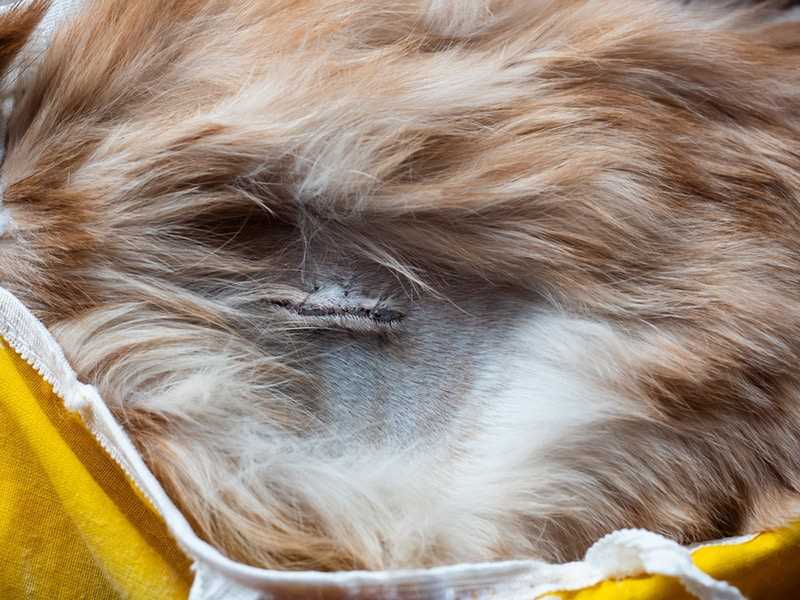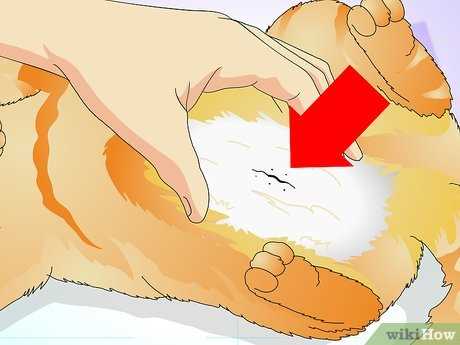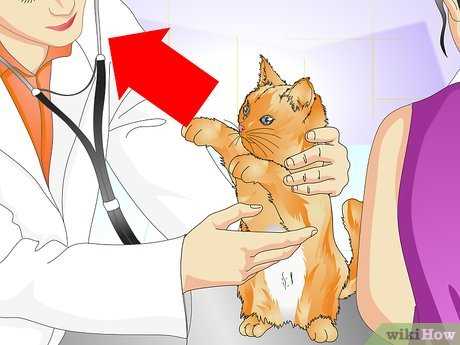

As an experienced observer of feline health, I can confidently state that a thorough physical examination is the most reliable method for determining whether a female has undergone the procedure to prevent reproduction. The key signs to look for include the absence of an external incision or scar typically found in the lower abdomen, as well as the lack of any visible reproductive organs during an examination.
During the check-up, skilled professionals may also assess the hormonal levels through blood tests, providing additional evidence regarding the reproductive status. It’s beneficial to keep a record of any past medical procedures, which can offer crucial insights into your furry friend’s health history.
Being aware of behavioral changes may also assist in this evaluation. If a female displays signs of heat or unusual vocalization, it could suggest that she has not undergone the procedure. Regular visits to a healthcare provider can help maintain your pet’s well-being and allow for ongoing monitoring of her reproductive health.
Identification of Spaying in Felines

After a thorough examination, a knowledgeable practitioner can determine if a feline has undergone the procedure to remove reproductive organs. The most reliable method involves palpating the abdomen to check for any surgical scars or signs of previous surgery.
Additionally, a visual assessment of the body can reveal specific characteristics. For instance, if there are no external signs of heat cycles, it’s likely that the feline has been altered.
Ultrasound or X-rays might also provide insights into the reproductive status, particularly if there are any doubts about surgical history. These imaging techniques can help visualize any remaining reproductive tissues.
It’s recommended to maintain accurate records of medical procedures, including details about spaying. This documentation can significantly aid in understanding a feline’s health history.
Communication with previous caregivers or shelters can be invaluable in confirming whether a feline has undergone the procedure. Sometimes, the answers are just a conversation away.
Identifying Physical Signs of Spaying in Cats
The most noticeable indication of a surgical procedure in females is the absence of specific reproductive organs. Generally, a small, healed incision may be visible on the abdomen, often located just below the belly button. This scar can range from being barely noticeable to slightly more pronounced, depending on the healing process.
Additionally, hormonal changes post-surgery lead to a significant reduction in behaviors associated with heat cycles. If a feline no longer exhibits signs of being in heat, such as restlessness, vocalization, or affectionate behavior, it likely indicates that the procedure occurred.
Weight changes can also be a factor; some may gain weight due to hormonal shifts impacting metabolism. Regular monitoring of body condition is essential. Ensure a balanced diet to maintain a healthy weight.
For those curious about dietary options, it’s safe to check if they can enjoy sweet potato fries as a treat. Remember to consult with a healthcare professional to confirm suitability for your furry friend.
Understanding Veterinary Diagnostic Methods for Spaying Confirmation
For accurate verification of whether a feline has undergone sterilization, several diagnostic techniques are available. Blood tests can reveal hormonal levels, indicating reproductive status. A complete blood count might show a decrease in certain hormones, suggesting that the procedure was performed.
Ultrasound Imaging

Ultrasound can provide a non-invasive way to inspect the reproductive organs. This imaging method allows for the identification of any remaining ovarian or uterine tissue, confirming the absence of reproductive structures.
Exploratory Surgery

In some cases, a surgical evaluation may be necessary. This involves a procedure where the abdomen is examined directly to ascertain the presence or absence of reproductive organs. This method is definitive but should only be undertaken when absolutely required.
For those curious about pet care, check out this link on can you give dog wormer to cats.
As an experienced observer of feline health, I can confidently state that a thorough physical examination is the most reliable method for determining whether a female has undergone the procedure to prevent reproduction. The key signs to look for include the absence of an external incision or scar typically found in the lower abdomen, as well as the lack of any visible reproductive organs during an examination.
During the check-up, skilled professionals may also assess the hormonal levels through blood tests, providing additional evidence regarding the reproductive status. It’s beneficial to keep a record of any past medical procedures, which can offer crucial insights into your furry friend’s health history.
Being aware of behavioral changes may also assist in this evaluation. If a female displays signs of heat or unusual vocalization, it could suggest that she has not undergone the procedure. Regular visits to a healthcare provider can help maintain your pet’s well-being and allow for ongoing monitoring of her reproductive health.
Identification of Spaying in Felines

After a thorough examination, a knowledgeable practitioner can determine if a feline has undergone the procedure to remove reproductive organs. The most reliable method involves palpating the abdomen to check for any surgical scars or signs of previous surgery.
Additionally, a visual assessment of the body can reveal specific characteristics. For instance, if there are no external signs of heat cycles, it’s likely that the feline has been altered.
Ultrasound or X-rays might also provide insights into the reproductive status, particularly if there are any doubts about surgical history. These imaging techniques can help visualize any remaining reproductive tissues.
It’s recommended to maintain accurate records of medical procedures, including details about spaying. This documentation can significantly aid in understanding a feline’s health history.
Communication with previous caregivers or shelters can be invaluable in confirming whether a feline has undergone the procedure. Sometimes, the answers are just a conversation away.
Identifying Physical Signs of Spaying in Cats
The most noticeable indication of a surgical procedure in females is the absence of specific reproductive organs. Generally, a small, healed incision may be visible on the abdomen, often located just below the belly button. This scar can range from being barely noticeable to slightly more pronounced, depending on the healing process.
Additionally, hormonal changes post-surgery lead to a significant reduction in behaviors associated with heat cycles. If a feline no longer exhibits signs of being in heat, such as restlessness, vocalization, or affectionate behavior, it likely indicates that the procedure occurred.
Weight changes can also be a factor; some may gain weight due to hormonal shifts impacting metabolism. Regular monitoring of body condition is essential. Ensure a balanced diet to maintain a healthy weight.
For those curious about dietary options, it’s safe to check if they can enjoy sweet potato fries as a treat. Remember to consult with a healthcare professional to confirm suitability for your furry friend.
Understanding Veterinary Diagnostic Methods for Spaying Confirmation
For accurate verification of whether a feline has undergone sterilization, several diagnostic techniques are available. Blood tests can reveal hormonal levels, indicating reproductive status. A complete blood count might show a decrease in certain hormones, suggesting that the procedure was performed.
Ultrasound Imaging

Ultrasound can provide a non-invasive way to inspect the reproductive organs. This imaging method allows for the identification of any remaining ovarian or uterine tissue, confirming the absence of reproductive structures.
Exploratory Surgery

In some cases, a surgical evaluation may be necessary. This involves a procedure where the abdomen is examined directly to ascertain the presence or absence of reproductive organs. This method is definitive but should only be undertaken when absolutely required.
For those curious about pet care, check out this link on can you give dog wormer to cats.
As an experienced observer of feline health, I can confidently state that a thorough physical examination is the most reliable method for determining whether a female has undergone the procedure to prevent reproduction. The key signs to look for include the absence of an external incision or scar typically found in the lower abdomen, as well as the lack of any visible reproductive organs during an examination.
During the check-up, skilled professionals may also assess the hormonal levels through blood tests, providing additional evidence regarding the reproductive status. It’s beneficial to keep a record of any past medical procedures, which can offer crucial insights into your furry friend’s health history.
Being aware of behavioral changes may also assist in this evaluation. If a female displays signs of heat or unusual vocalization, it could suggest that she has not undergone the procedure. Regular visits to a healthcare provider can help maintain your pet’s well-being and allow for ongoing monitoring of her reproductive health.
Identification of Spaying in Felines

After a thorough examination, a knowledgeable practitioner can determine if a feline has undergone the procedure to remove reproductive organs. The most reliable method involves palpating the abdomen to check for any surgical scars or signs of previous surgery.
Additionally, a visual assessment of the body can reveal specific characteristics. For instance, if there are no external signs of heat cycles, it’s likely that the feline has been altered.
Ultrasound or X-rays might also provide insights into the reproductive status, particularly if there are any doubts about surgical history. These imaging techniques can help visualize any remaining reproductive tissues.
It’s recommended to maintain accurate records of medical procedures, including details about spaying. This documentation can significantly aid in understanding a feline’s health history.
Communication with previous caregivers or shelters can be invaluable in confirming whether a feline has undergone the procedure. Sometimes, the answers are just a conversation away.
Identifying Physical Signs of Spaying in Cats
The most noticeable indication of a surgical procedure in females is the absence of specific reproductive organs. Generally, a small, healed incision may be visible on the abdomen, often located just below the belly button. This scar can range from being barely noticeable to slightly more pronounced, depending on the healing process.
Additionally, hormonal changes post-surgery lead to a significant reduction in behaviors associated with heat cycles. If a feline no longer exhibits signs of being in heat, such as restlessness, vocalization, or affectionate behavior, it likely indicates that the procedure occurred.
Weight changes can also be a factor; some may gain weight due to hormonal shifts impacting metabolism. Regular monitoring of body condition is essential. Ensure a balanced diet to maintain a healthy weight.
For those curious about dietary options, it’s safe to check if they can enjoy sweet potato fries as a treat. Remember to consult with a healthcare professional to confirm suitability for your furry friend.
Understanding Veterinary Diagnostic Methods for Spaying Confirmation
For accurate verification of whether a feline has undergone sterilization, several diagnostic techniques are available. Blood tests can reveal hormonal levels, indicating reproductive status. A complete blood count might show a decrease in certain hormones, suggesting that the procedure was performed.
Ultrasound Imaging

Ultrasound can provide a non-invasive way to inspect the reproductive organs. This imaging method allows for the identification of any remaining ovarian or uterine tissue, confirming the absence of reproductive structures.
Exploratory Surgery

In some cases, a surgical evaluation may be necessary. This involves a procedure where the abdomen is examined directly to ascertain the presence or absence of reproductive organs. This method is definitive but should only be undertaken when absolutely required.
For those curious about pet care, check out this link on can you give dog wormer to cats.








